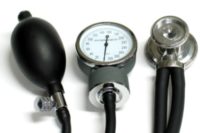Why your dentist should have an ECP

More than a quarter of private dental practices do not have plans in place to control bloodborne pathogen exposure, according to a new survey conducted by the National Institute for Occupational Safety and Health (NIOSH) and the Organization for Safety, Asepsis and Prevention (OSAP). Survey results are published in the June issue of the Compendium of Continuing Education in Dentistry and is available online.
OSHA's requirements
The survey attempted to determine whether private dental practices are aware of OSHA’s requirement for a written site-specific bloodborne pathogens exposure control plan (ECP), have one that addresses all requisite elements, and can identify barriers to implementation of an ECP.
The OSHA bloodborne pathogen (BBP) standard covers all dental healthcare settings where dental healthcare personnel could be exposed to blood or certain body fluids during the performance of their job, and describes precautionary practices to protect healthcare workers from pathogens such as hepatitis B virus (HBV), hepatitis C virus (HBV) and human immunodeficiency virus (HIV). These pathogens can be transmitted from patient to dental healthcare provider or patient to patient via contact with blood or certain body fluids.
Overall, 1,059 respondents representing private, non-franchised dental practices across the U.S. completed the online survey. They primarily included dentists who owned the practice (63%) and others in the practice including non-owner dentists, dental hygienists, and other staff.
Protecting workers and patients
“Having an effective exposure control plan that everyone in the dental office is aware of will better protect dental healthcare personnel and their patients from exposure to bloodborne pathogens” said NIOSH Director John Howard, M.D. “Identifying any barriers to the implementation of an exposure control plan is a critically important step to making the exposure control plan as effective as it can be.”
Survey findings showed that participating private dental practices were either unaware of the requirement to have an ECP or did not adhere to all key elements of the ECP if they had one. Salient findings, expressed as percent of dental practices that participated in the survey, show that:
- 28% did not have a written site-specific ECP, including 4% who didn’t know whether or not they had one;
- 50% without an ECP had no plans to implement one in the next 12 months;
- 20% with a plan had not implemented all of the elements; the primary reasons for not having all elements was “not aware it was needed” (50%), “lack of expertise” (47%) and “lack of time” (36%);
- 24% with a plan had not reviewed it within the past year;
- 65% did not use needles with sharps injury prevention features; and
- 15% did not offer HBV vaccine to its employees and another 8% did not know if they did or not.
The conclusion: survey respondents from dental practices were either unaware of or not fully complying with the OSHA BBP standard. A relatively low response rate precludes generalization of the findings to all private dental practices. Nevertheless, NIOSH says the findings should prompt all dental practices to evaluate if they have an appropriate ECP containing all of the key elements and develop an ECP if they do not have one. Periodic review of the ECP and training and education of staff with potential exposure to BBPs on current infection control policies and practices is necessary to avoid complacency and ensure compliance.
Going forward
This study is one of the first to examine extent of awareness of and compliance with OSHA’s bloodborne pathogens standard in private dental practices, particularly with respect to having an exposure control plan. NIOSH says this information supports the need for increased continuing education and training on methods to prevent occupational exposure to bloodborne pathogens in dental settings. To access the paper online, visit: https://www.ncbi.nlm.nih.gov/pubmed/28570085, or https://www.dentalaegis.com/cced/2017/06/use-of-bloodborne-pathogens-exposure-control-plans-in-private-dental-practices-results-and-clinical-implications-of-a-national-survey.
To learn more about healthcare safety and health, visit: http://www.cdc.gov/niosh/topics/healthcare/
NIOSH is the federal institute that conducts research and makes recommendations for preventing work-related injuries, illnesses and deaths. More information can be found at http://www.cdc.gov/niosh/.
Looking for a reprint of this article?
From high-res PDFs to custom plaques, order your copy today!








